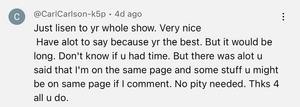
By Steve Zorn
With the Ocala Breeders Sales Co.’s March sale in the books, the annual two-year-old sale season is off to what pinhookers hope will be a more normal year than 2020’s COVID-disrupted auction season. So, what do the OBS March results tell us about the new normal?
Last year, the juvenile sales season was completely torn apart by the pandemic. Three of the major OBS and Fasig-Tipton sales never happened at all, and three others had to be rescheduled and re-catalogued. Only the OBS March sale went off as advertised, and there, just as the country was starting to lock down, the results were disastrous. The virus, a stock market decline of some 30% by mid-March 2020, and general uncertainty about the future of racing all combined to result in a decline of nearly one-third in the amount that buyers spent at the sale, from $186 million in 2019 to just $126.8 million last year.
The number of horses sold at OBS that March dropped only a bit, from 306 to 295, but that was in the face of a much larger catalogue – 681 horses listed last year versus 577 in 2019. So, the clearance rate – the percentage of the catalogue that actually sold – dropped from 53.0% in 2019 to just 43.3%, the first time in memory that less than half the horses listed were sold. RNAs ballooned from 96 in 2019 to 186, while scratches, whether because of injury, slow breeze times or sellers’ expectations that they wouldn’t get their price, increased from 175 to 200.
For the 2020 juvenile auction season as a whole, the number of horses reported as sold at all of OBS’s and Fasig-Tipton’s sales dropped from the previous year’s 2120 (roughly 10.5% of the 2018 foal crop) to just 1764 (a mere 8.5% of the foal crop). And the money dropped off even more sharply; gross receipts at all of last year’s two-year-old auctions were only $126.8 million, compared to $186 million the year before. That left pinhookers with a lot less money to go chasing yearlings at the fall sales, a factor that did seem to have some impact on yearling prices later last year.
Coming into the 2021 sales season, the factors that ravaged the 2020 two-year-old market have abated. With the vaccine supply growing, the end of the COVID shutdown seems close, and race tracks have shown they’re able to run a regular schedule, albeit without some or all of their on-track crowds. More importantly for the health of the thoroughbred market, race track handle has held at pre-pandemic levels, and the stock market is back to record highs, reassuring the wealthy class, some of whose members buy expensive horses. Overall, the long-term outlook for racing doesn’t seem any worse than it’s been for years; in some quarters, the enactment of the federal Horseracing Integrity and Safety Act is even seen as a hopeful sign, although the Act’s future is now threatened by a lawsuit, as I described in my last column, filed on behalf of the National Horsemen’s Benevolent and Protective Association and a number of its regional affiliates.
Given all of that, one would expect OBS March 2021 not just to surpass last year’s dismal showing, but to compare favorably with the last “normal” sale, the one in 2019. And, in some respects, it did: the catalogues were of similar size, 577 horses in 2019, 563 this year. In addition, 326 horses sold this year, twenty more than two years ago, raising the clearance rate from 53% to nearly 58%. Money, though better than in Covid-challenged 2020, was still in somewhat short supply; the sale grossed $38.3 million this year, well above last year’s disaster, but well short of the $44.2 million received in 2019. That meant that the average and median prices declined substantially, from $144,603 and $80,000 respectively two years ago to $117,377 and $62,500 this year.
This overall decline from the last “normal” year could also be seen at the top of the sale market. In 2019, it took a price of $850,000 to land a place in the top five sale horses. The most expensive horse, a son of Tapit out of the multiple-Grade 1-winning mare Artemis Agrotera, went for $2 million. (That horse, named Chestertown, is now 12-4-3-2, with earnings of $264,495 and a stakes win as a three-year-old in the NY-bred Albany.) This year, the top price was $750,000, for a daughter of the Into Mischief-line stallion Practical Joke, purchased by a Japanese buyer, and it took just $550,000 for a horse to land in the top five.
As always, horses that breezed fast sold for more money. Some 30 horses ran an eighth of a mile in 9 and 4/5 seconds, breaking the magic 10-second barrier. I will save for another column my thoughts about the deleterious effect on the health and conditioning of young two-year-olds who are asked to run an eighth that fast. Suffice it to say, for now, that it definitely raises the price. Of those 30, two were scratched from the auction, and four failed to reach their reserve in the ring. The remaining 24, including the sale topper, sold for a total of $7,340,000, or an average of $305,833. By way of comparison, the other 302 horses that sold at Ocala, none of whom ran an eighth under 10 seconds, averaged only $102,401. As consignor Eddie Woods has said, people want to buy a fast horse; they don’t want to buy a slow horse. Whether the best way to identify a fast horse is to breeze it faster than it will ever again run in its life is another question. Some pinhookers, like Kip Elser of Kirkwood Stables, are resisting the pressure, just galloping their two-year-olds through the stretch. But it’s hard to overcome the evidence of the stop watch; fast breezes mean big money, whether that’s good for the horse or not.
On the evidence of OBS March, prices are still somewhat depressed. Calendar-wise, however, the two-year-old market is pretty much back to normal. Fasig-Tipton will be holding its usual sales at Gulfstream on March 31, at Timonium in May and at Santa Anita in June, while OBS has scheduled its regular April and June sales. Keeneland is not holding a juvenile sale this year, though it does have a sale of horses of racing age scheduled for late April.
The OBS March results suggest that the auctions are likely to return to the norm of selling roughly 10% of the foal crop, as in the years before the pandemic. But perhaps the past year has tamped down some of the irrational exuberance, to use Alan Greenspan’s description of the stock market’s dot-com boom of the 1990s, that from time to time leads buyers to pay millions of dollars for horses that have little chance of earning that much either on the race track or in the breeding shed. The Gulfstream sale, taking place at the end of this month, usually attracts the very highest-priced two-year-olds. That might give us a clearer indication of whether anyone is still willing to cross the million-dollar barrier for an unraced horse that just happens to be able to run a furlong in under 10 seconds.




